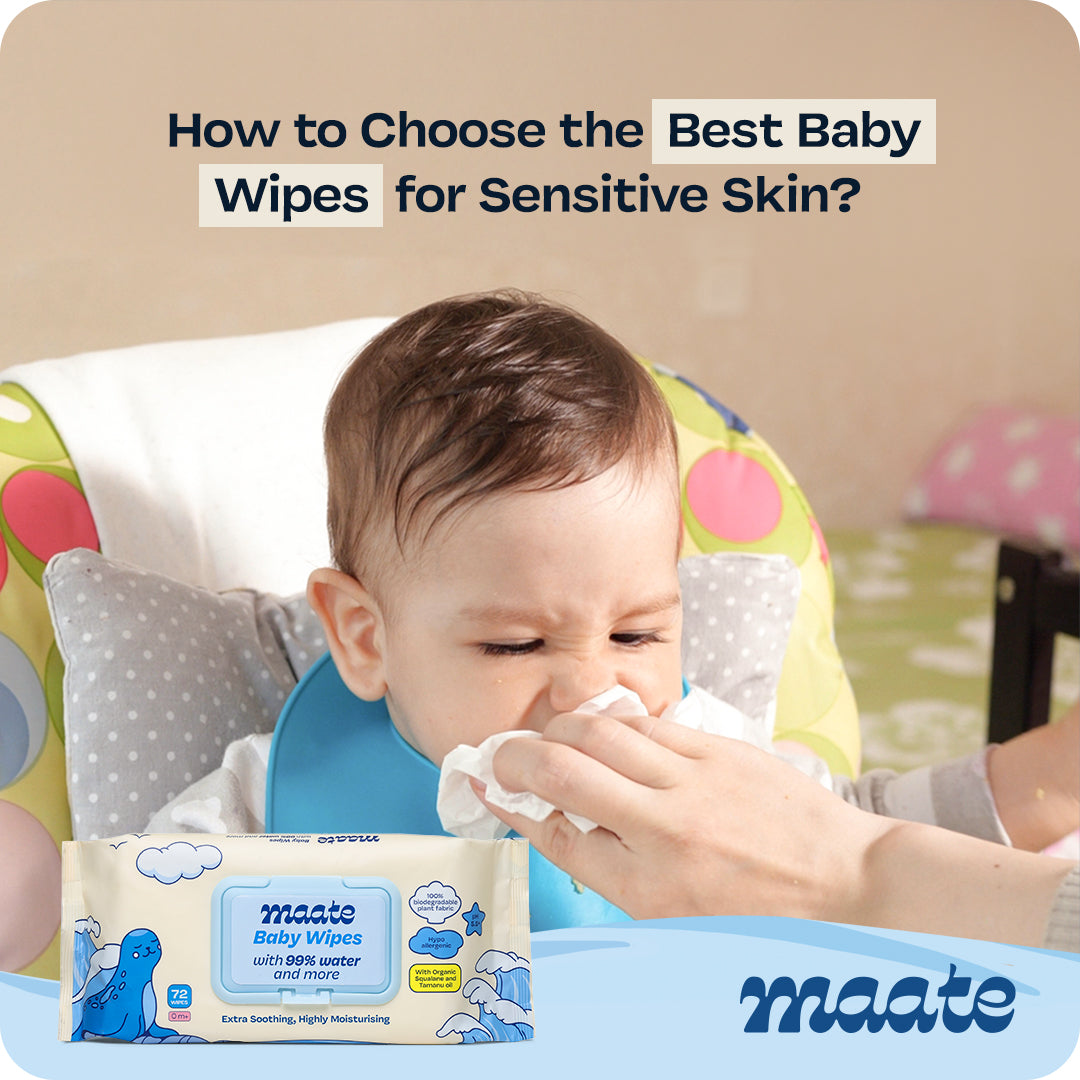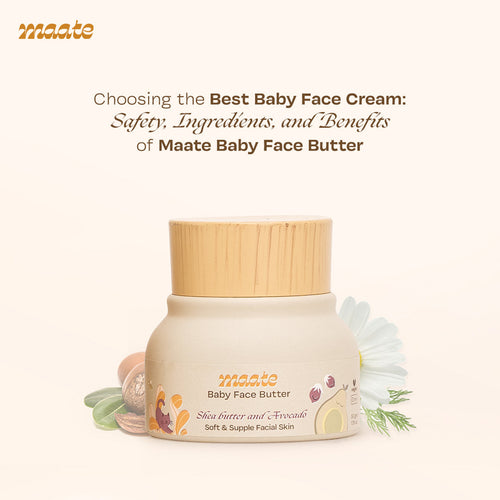Massage in an Indian home is a daily ritual, which we start right from infancy. The history of massage can be traced back 5000 years, to the beginnings of Ayurveda. Considered a gift of the Gods, Ayur means life and Veda is knowledge.The beauty of this practice is linked to the essence of Ayurveda – to maintain the body’s natural harmony in the world. When our internal ecosystem is disrupted there is an imbalance, and doshas (energies) get aggravated leading to disease and distress.
Massage has the proven potency to aid cure, relieve aches and pains, and prevent ailments. More so, it is a natural way to keep the body rejuvenated and healthy and builds immunity. In the Ayurvedic system, massage with specific oils aims to restore your mental and physical balance, by clearing these blocks and liberating your energy channels.
Benefits of massage for infants
In infants, massage aids blood circulation, stimulates the nerve pathways, encourages muscle tone and helps in overall growth and development. In Ayurveda this is related to Vatadosha. Aside of these overall benefits, you will find that a lot of uneasy discomforts of an infant are relieved such as colic pain. This is connected to Pitta dosha. A baby’s body is still evolving and cannot deal with changing temperatures. They are prone to colds and coughs and this relates to Kaphadosha. Massage helps to control the skin temperature better and gives baby neuromuscular wellness. With the use of special oils, head massage nourishes the scalp and supports the growth of hair, while application on the body brings luster to the skin. Massage is also therapeutic – it improves sleep, relaxes the body and strengthens the bond between mother and child.
The Maaté Way for infants
India’s science of massage first went to other parts of Asia, then the Middle East and the West. When a practice leaves us and travels and returns, it brings back rich learning. Today, we can combine the best types of ingredients and techniques from across the world, with a firm grounding in our own heritage.
At Maaté, oil is central to our philosophy, drawing from our own Indian practices. We look to Ayurveda for inspiration as it is a holistic medical practice, not just superficial feel-good therapy. Oil is of essence going beyond a method of application as deep penetration into the porous skin gives wonderful benefits. The skin being the largest organ, the systematic application of oils is also a fantastic way of detoxification, removing the build-up of unwanted substances.
Shishu Abhyanga
Ayurveda has a special place for infants. The traditional oil massage, following the Abhyanga routine of Ayurveda, is termed ‘Shishu Abhyanga’. In this method, oil is applied over the entire body, from head to feet. After an oil massage, the baby can be bathed in lukewarm water, carefully patted dry, then dressed in soft clothing to retain the effects.What is special about Maaté’s Nourish range
Maaté’s Nourish range of products is inspired by the way a mother nourishes her child, and how nature inspires nourishment. Our massage oils for hair and body promote overall wellbeing by bringing exclusive ingredients for your baby’s nutrition and growth. And we do it naturally, using handpicked ingredients in the formulations. It takes a year for a baby’s skin to develop to a hardier protective layer. Till then, their skin is susceptible and is not able to reject many toxins. Many products in the market contain ingredients that are harmful in the long term.
Our products have all-natural ingredients curated to bring special benefits for your baby. In our Body Massage Oil, Sesame Oil is combined with MorindaCitrifolia Leaf Extract – both have high calcium and magnesium content. Our in vitro tests performed at an international lab, shows that 54 percent of calcium can be absorbed.
Wheatgerm, Coconut and Avocado oil provide nutrients as well as enhance absorption of nutrients into the bones and body cells.
A baby’s skin is delicate and sensitive, and can easily get dry when exposed. Keeping the skin optimally moisturized is of essence. Newborns are unable to control temperature also because the skin is still developing. Pomegranate Seed Oil, another vital ingredient along with Rosemary Oil improves blood circulation.
Maaté’s Hair Massage Oil has been prepared for your baby’s healthy hair growth. We clearly distinguish the body oil from hair oil, as our products are all designed to give specific benefits. Your baby’s hair follicles get nourished with the Hibiscus and Eclipta Alba and vitamin-rich Almond Oil. These also condition the tender scalp. MurrayaKoenigii, a rich source of beta-carotene and proteins, prevents hair thinning.
A bond of love and trust
There are also scientific reasons why your bond with baby is formed when you massage. Gentle massage and touch releases ‘oxytocin’ colloquially known as the ‘love hormone’ which reassures the infant and makes them feel good. This is the secret of bringing you closer to your baby.
How to Massage the Baby’s Body
- Set a time in your routine with baby, preferably in the morning before their bath, or in the evening. Massage should be done on an empty stomach.
- Sit your baby comfortably on a platform or make them lie down. Use a clean sheet on the surface and maintain hygiene.
- Start with the legs and make your way upwards, using gentle but firm strokes. Pour a small quantity of oil and hold their leg in your hands and gently pull downwards.
- Stroke the feet from the ankle to the toes. With your thumbs trace circles on the base of their feet. Gently stroke your baby’s toes.
- Next, massage your baby’s hands, applying soft strokes from the armpits to the palms. Attend to each finger with care, using a light touch.
- Massage the baby’s abdomen, using your hands to make a swiveling motion.
- When you are comfortable, you can also turn the baby around on their belly and massage the back with long strokes. Use circular strokes on the baby’s buttocks.
- When you are done, bathe the baby in lukewarm water and then pat them dry and dress them in soft clothing.
How to massage your baby’s head
- Choose a surface that is safe and broad – the floor with a massage sheet or protective mat, for instance.
- A baby’s head has to be well supported. They will not be able to hold their head up till 18 months.
- Lay the baby down on their back on a padded surface and ensure their head is well-supported.
- Gently massage their head using a circular motion.
- The baby’s head is very soft and is being formed, so do not apply pressure when you massage.
Do’s and Don’ts
Every mother has questions, such as - How long should I massage my baby?
Is there a good time to massage? When should I start massaging my baby? Here we have compiled a list of do’s and don’ts, which address many of these common concerns.
Do’s
- Ideally begin massage when your baby is a month old – before this, an infant’s body is not strong enough to handle pressure.
- Give special attention to the back, neck, spine, hands and feet, to strengthen them as they will support the body.
- Massage should be planned into the baby’s routine fifteen minutes to half hour before their bath.
- You can also massage baby every day or even other day if you prefer.
- Choose to massage your baby in the mornings if you want to get them rejuvenated for the day
- You can also massage at bedtime if you would rather opt for relaxing baby to sleep better.
- Massage should be done on an empty stomach, or a minimum of one hour after baby’s feed.
Don’ts
- Never apply excess pressure on the baby’s body especially their head
- Avoid pressing on the soft spot at the center called the fontanelle.
- Avoid applying oil near the eyes.
- Never massage your baby just before or after meals.
- Skip massage if your baby shows signs of a flu, cold or cough, or if they are unwell with indigestion.
- Do not massage your baby if they are premature or low-weight.
- Never perform any technique if you see your baby showing discomfort.
Disclaimer:
Our blog brings you varied opinions and latest developments in baby care and products, as well as precautions in baby care. However, articles presented do not in any way supplement a doctor’s or medical practitioner’s advice and should not be taken as a substitute for medical intervention. The information presented in our blogs is made to be accurate to the best of our knowledge, but errors and variances may occur based on changing knowledge in related fields. Readers must consult with a medical professional for their specific problems and not rely on the articles presented in our blogs, which are meant to be informative in nature only.






